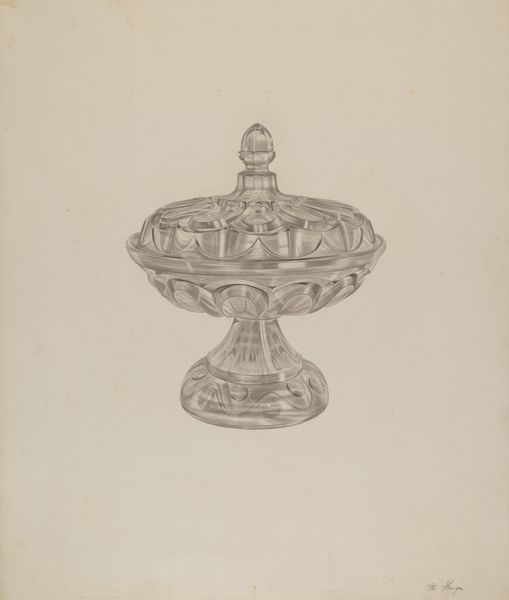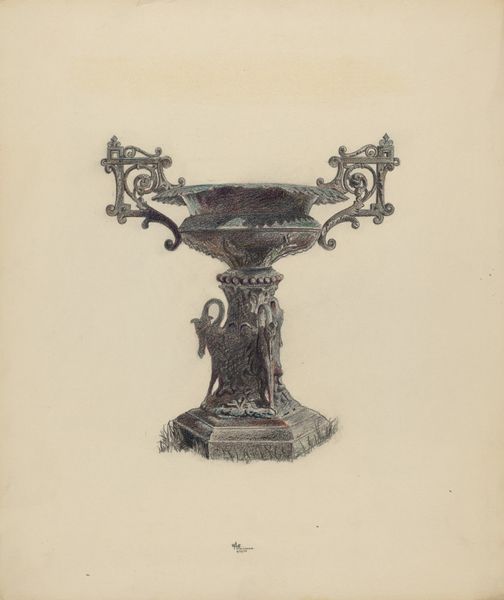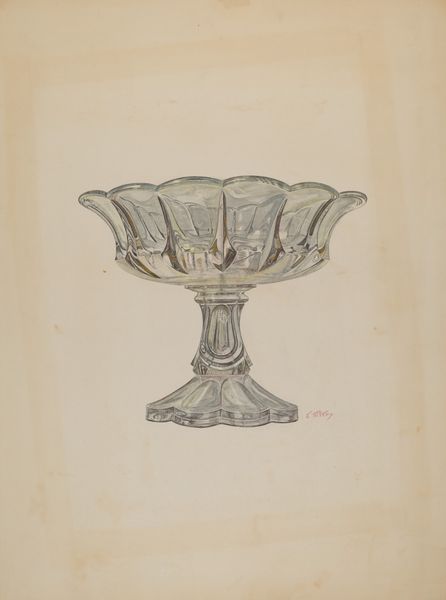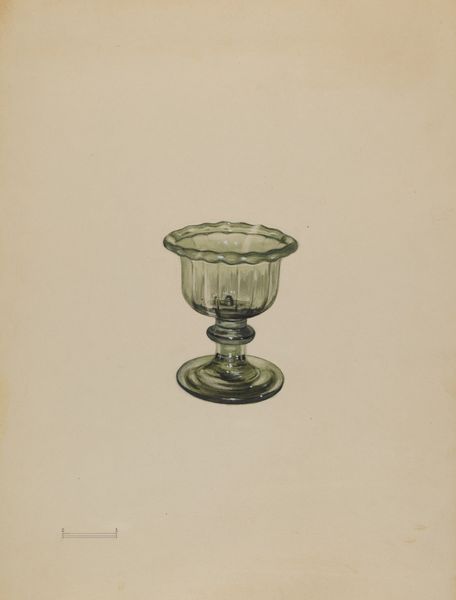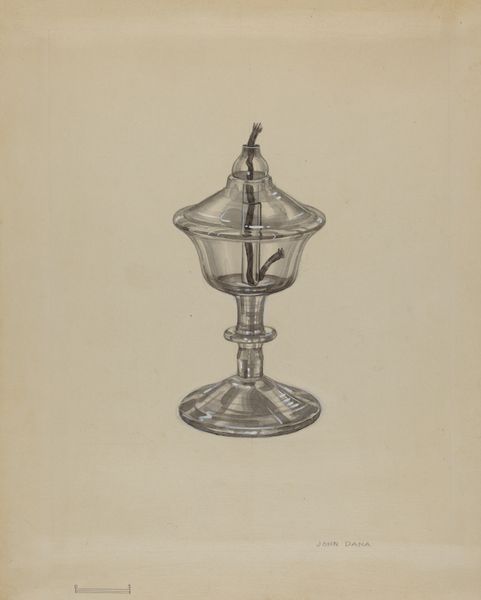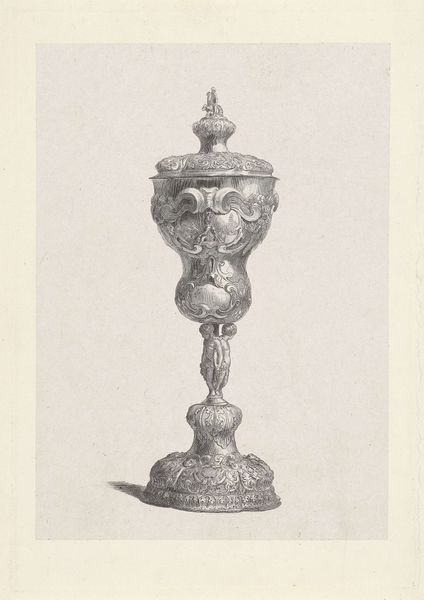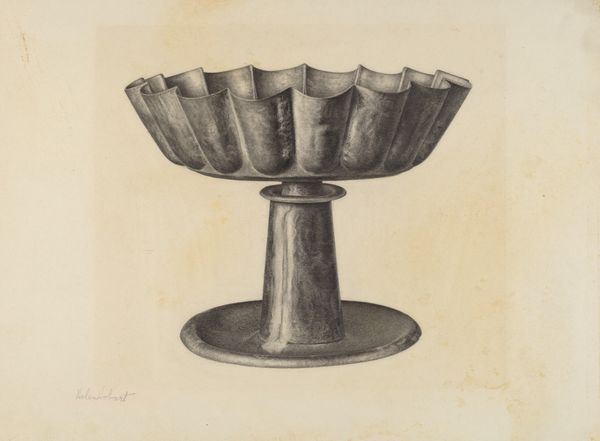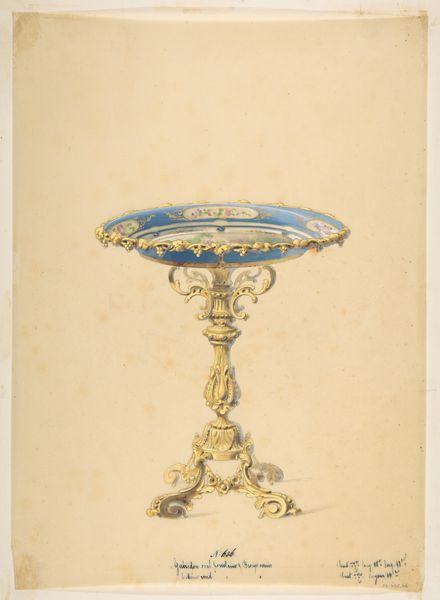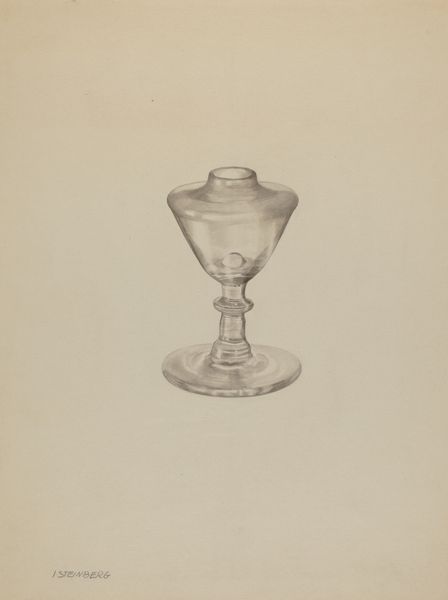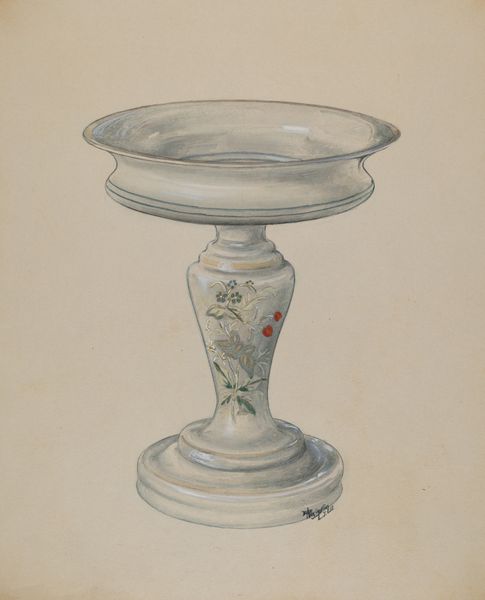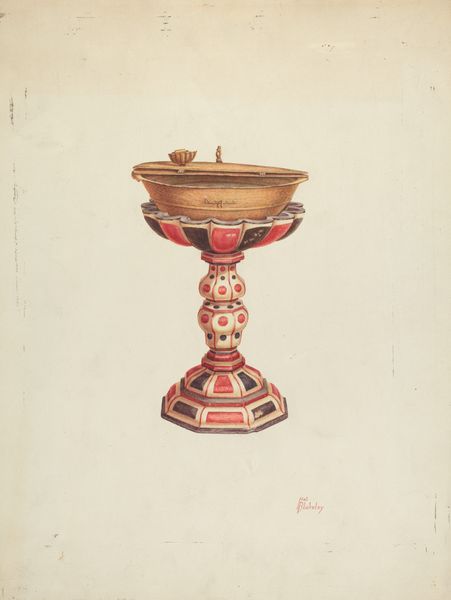
drawing, pencil
#
drawing
#
pencil drawing
#
geometric
#
pencil
Dimensions: overall: 38.4 x 28.8 cm (15 1/8 x 11 5/16 in.) Original IAD Object: 21 1/4" high, 24 1/2" in diameter
Copyright: National Gallery of Art: CC0 1.0
Curator: This drawing from 1938 by Ralph Atkinson is called “Urn for Flowers.” It appears to be a preparatory study rendered in pencil. What strikes you first? Editor: It’s stark. The almost clinical precision of the rendering against the emptiness of the background creates a sense of isolation. It looks like a monument, not an inviting receptacle for blooms. Curator: Precisely! Atkinson's approach really draws attention to the means of its creation. The dense crosshatching, especially on the urn’s base, is meticulous. There’s a palpable sense of labor embedded within those pencil strokes. I see this as more than just a preliminary sketch; it elevates the process of draftsmanship. Editor: And it's fascinating to think about what this kind of object represented in the late 1930s. An urn is an interesting vessel of the past—often associated with memorializing loss, particularly after the First World War and leading up to the Second. What social function was it meant to perform? The rigid formality, the weight of the stone, seem laden with meaning beyond mere decoration. Curator: Good point! The heavy base gives the object a grounding, but the delicacy of the urn itself, those almost lacelike details, provide an intriguing contrast. This interplay makes you consider the craftsperson’s technical mastery and also the societal implications of luxury and decoration during this interwar period. Editor: Absolutely, especially given the economic and political landscape of the time. It pushes me to consider how such objects were not merely aesthetic pursuits, but also enmeshed with socioeconomic forces, class structures, and the role of patronage. Curator: And even now, reflecting on the materials, it still holds relevance. We can delve into not just the consumption of luxury, but of how those things impact artistic communities and practices in different regions. Editor: True, that’s the beauty of an artwork like this. The more you explore its construction, both literally and figuratively, the more it becomes a poignant reflection of its time and a point of departure for examining ours.
Comments
No comments
Be the first to comment and join the conversation on the ultimate creative platform.
